Hello all
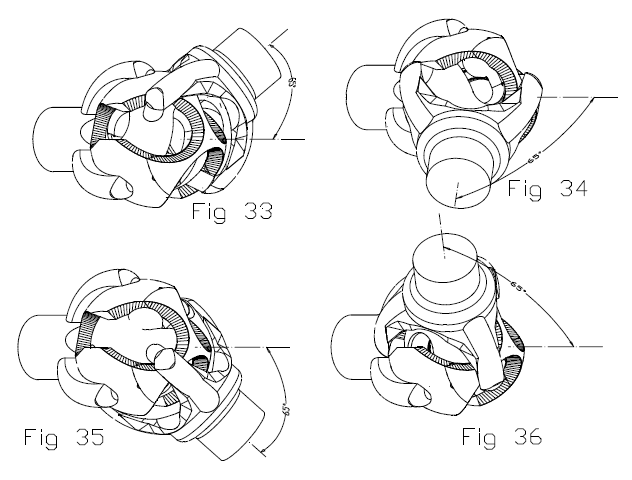
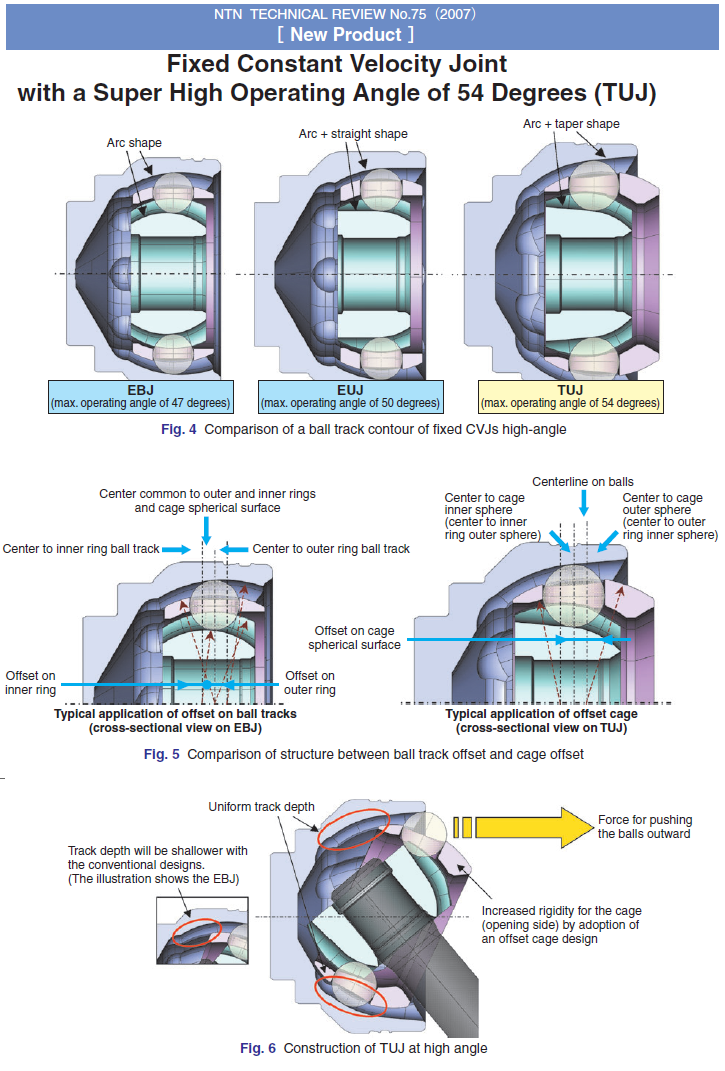
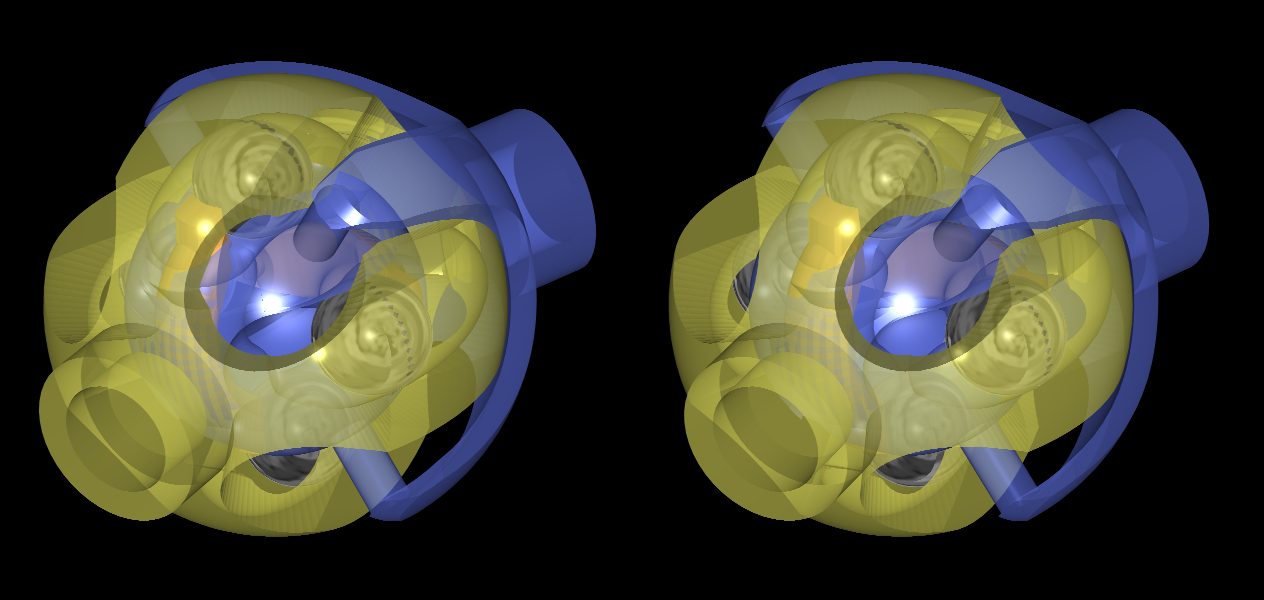
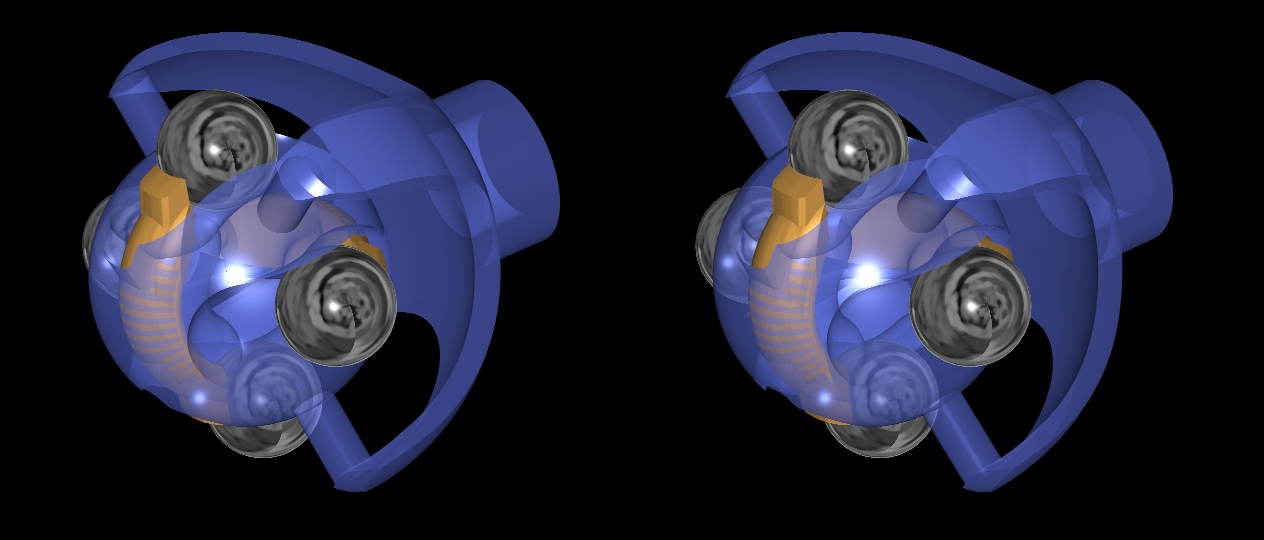
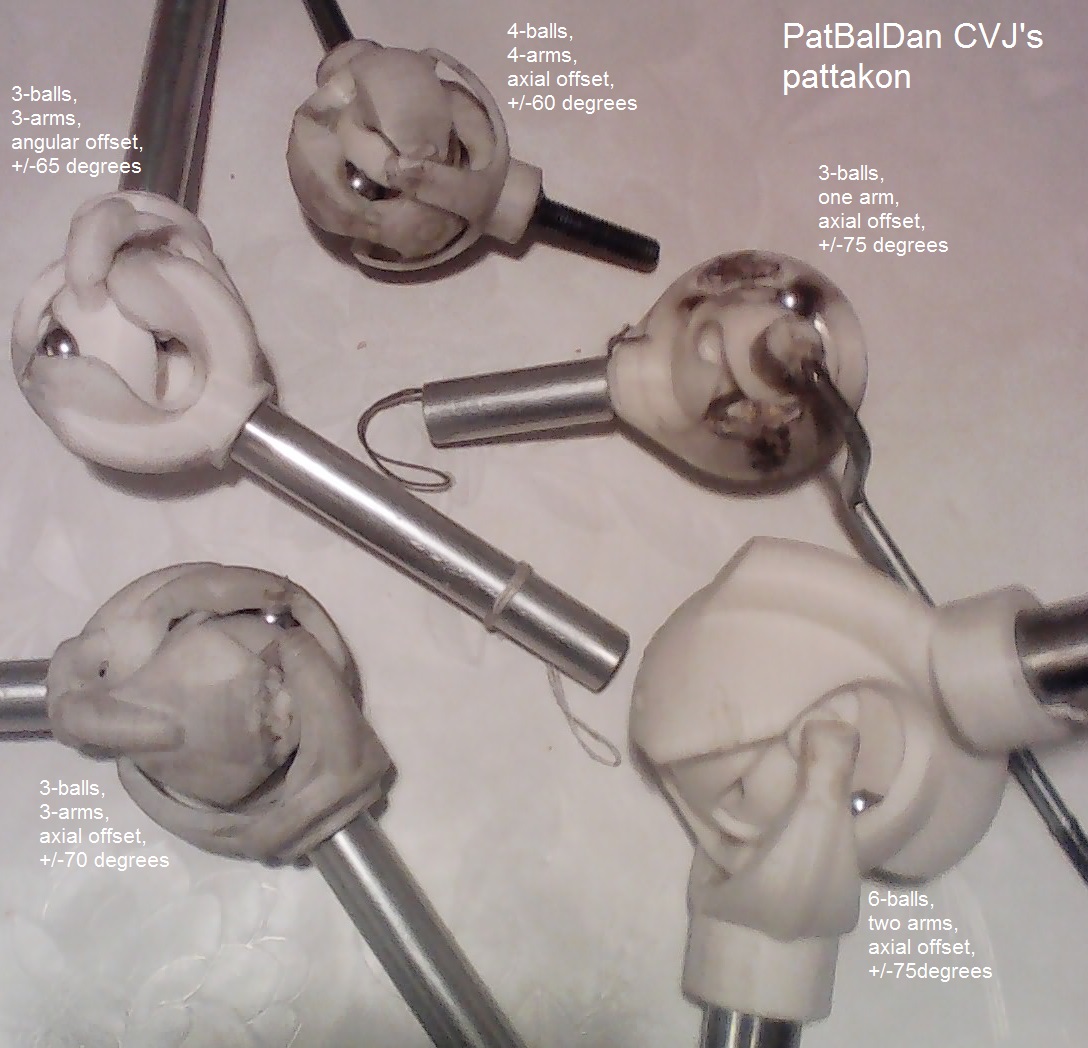
Posted 17 February 2019 - 10:13
Hello all





Advertisement
Posted 18 February 2019 - 01:13
That would be very useful in steering columns. Getting the UJ angles optimised is a cause of constant aggravation (3 UJs floating in space with different pahsing for each one).
I'm sure you are aware of this but the torque capacity looks rather low compared with more conventional designs.
Well done anyway, very interesting.
Posted 18 February 2019 - 08:51
Thank you, Greg.
You write:
“That would be very useful in steering columns. Getting the UJ angles optimised is a cause of constant aggravation (3 UJs floating in space with different pahsing for each one).”
Interesting application; with three PatBalDan in series, the “direction” of the rotation can change more than 180 degrees (like “U turn”).
You also write:
“I'm sure you are aware of this but the torque capacity looks rather low compared with more conventional designs.”
The following drawing shows the one shaft of a PatBalDan side-by-side with the NTN-TUJ:
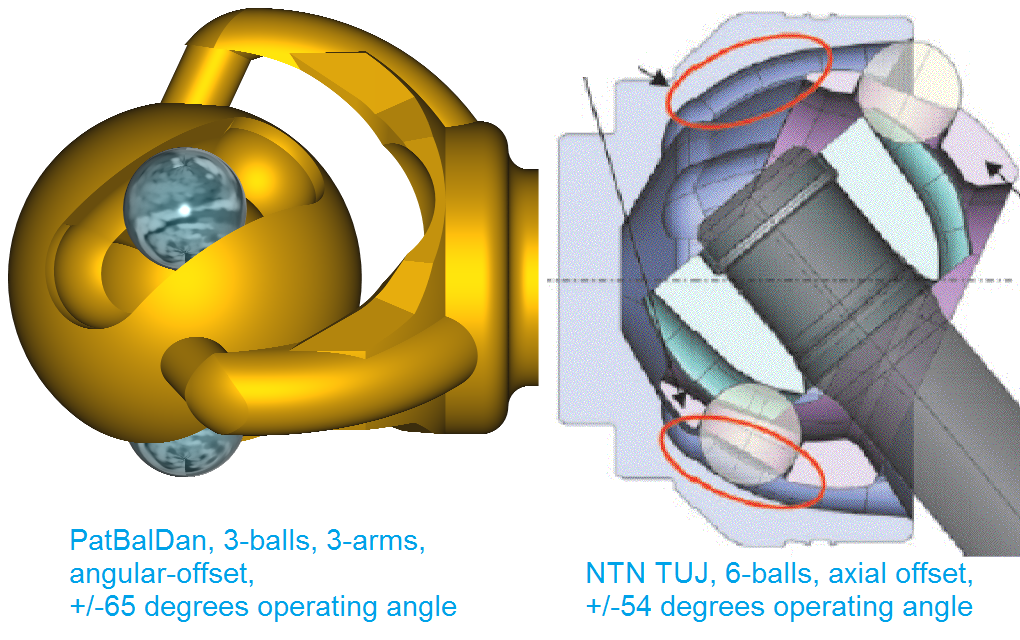
For the same external dimensions, the balls of the PatBalDan are substantially larger.
Here is the “cage” (“cage” in the meaning that it keeps permanently the ball centers on a plane passing through the center of the joint) of the above “angular offset” PatBalDan:
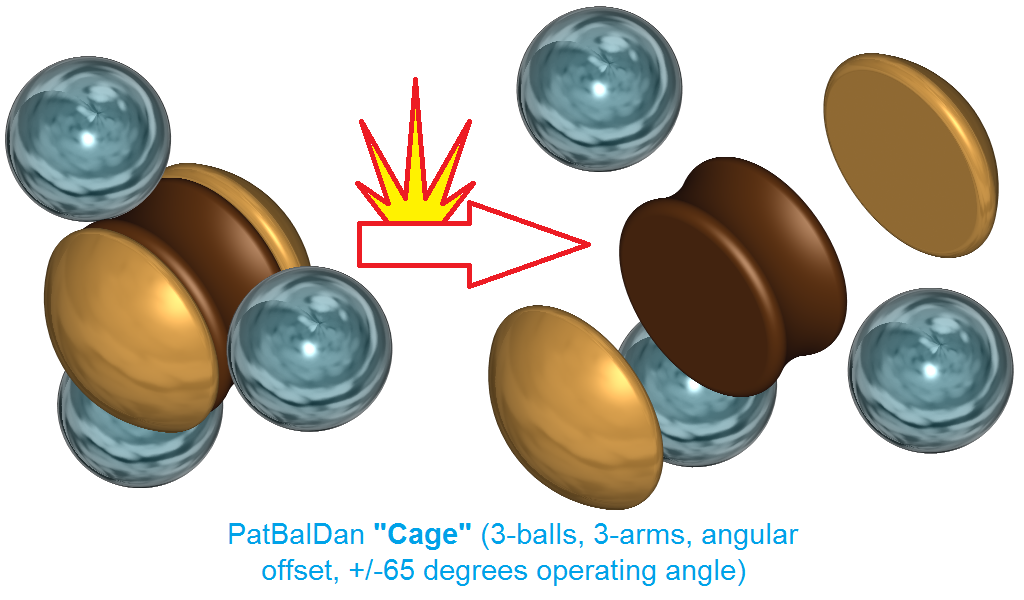
With angular offset, the centers of the balls remain at constant distance from the center of the joint, while with “axial offset” the distance of the centers of the balls from the center of the joint vary during a rotation of the shafts.
In the above “cage”, an unconventional and interesting characteristic is that the balls keep “linear contact” with their “cage”, while in the “axial offset” CVJs the balls cannot help “point contact” with their cage.
The fewer but larger balls, and the “linear contact” talk for increased torque capacity.
Thanks
Manolis Pattakos
Posted 18 February 2019 - 10:07
I was comparing the spindly arms with the cup geometry of a 6 ball Rzeppa, but I guess you add an outer sphere to the spindly arms to get a cup. Does that make sense?
Posted 18 February 2019 - 17:06
Hello Greg.
Yes, if necessary the "arms" (or fingers) can be bridged / webbed by an outer spherical cup.
Some other PatBalDan designs are already like "spherical cups".
The following animation shows from various view-points the "outer race member" of a: 3-ball, single-arm, axial-offset, +/-75degrees PatBalDan:
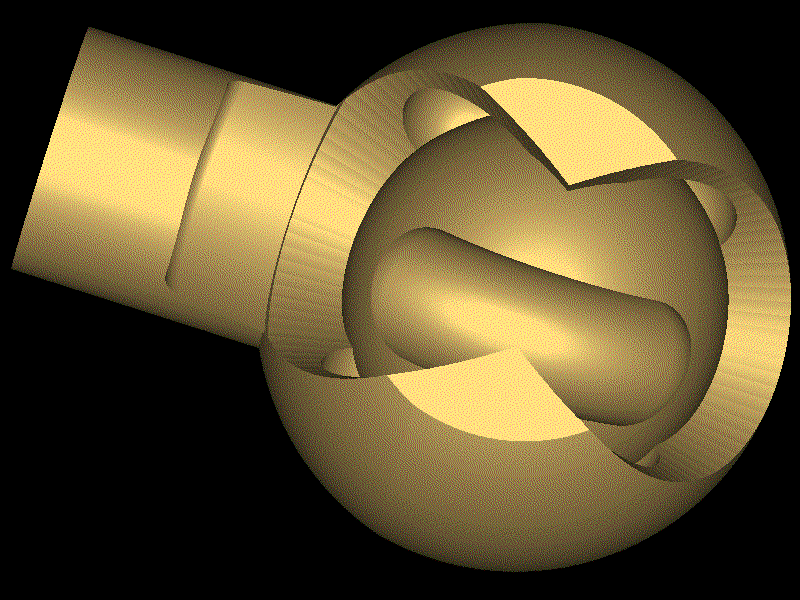
EDIT:
Here is the NTN_TUJ for comparison:
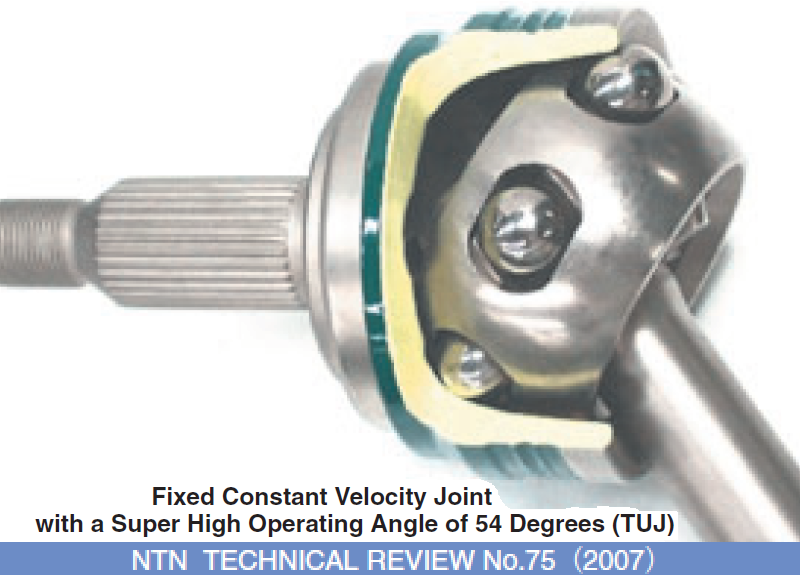
In both cases the "outer race member" is a "spherical cup".
The difference is in the direction of the opening of the spherical cup: in the conventional CVJ the opening is arranged oppositely to the shaft, while in the above PatBalDan version the opening of the "spherical cup" is arranged "perpendicular" to the shaft.
I think it is more clear now.
Thanks
Manolis Pattakos
Edited by manolis, 19 February 2019 - 05:08.